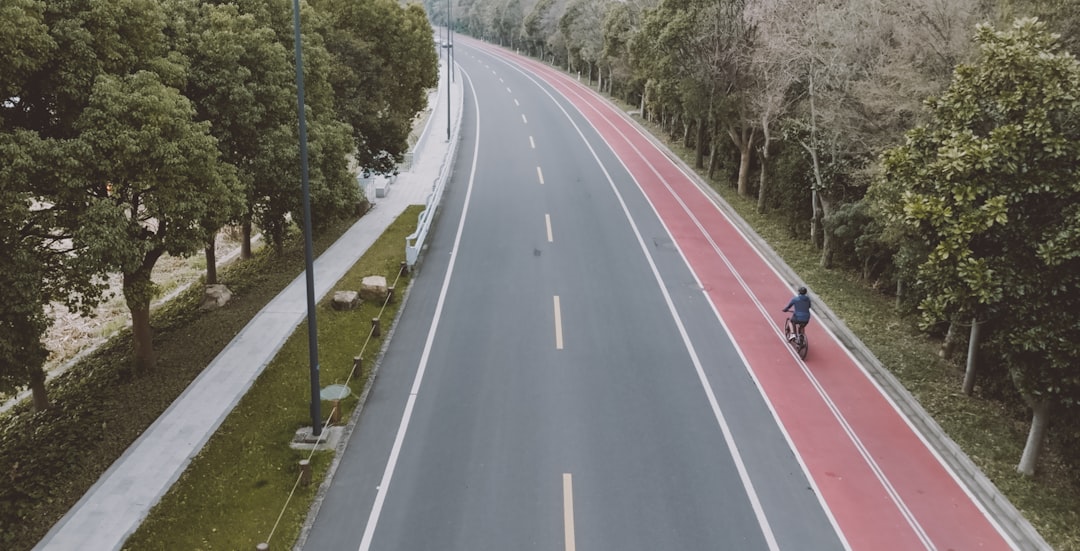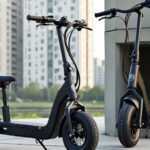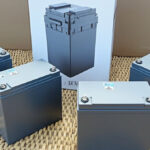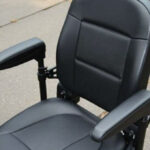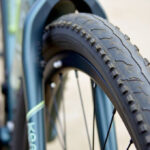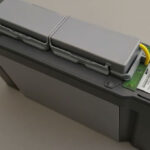When it comes to understanding the e bike wire diagram, it may feel like deciphering a complex puzzle. But fear not, fellow eco-friendly commuter! Here’s what you need to know in a nutshell:
- Battery to Controller: Usually 2 wires (red and black), typically fused on the positive.
- Controller to Motor: Involves three main power wires (blue, yellow, green).
- Hall Sensors: Monitor motor position with five wires (red, black, blue, yellow, green).
- Throttle and Brakes: Often 3-4 throttle wires (varying colors) and paired brake wires (red and black).
eBikes offer a brilliant solution for those looking for sustainable and enjoyable transportation, but understanding their wiring can be essential for anyone who wishes to maintain or modify their ride. The wiring layout is the backbone of an eBike’s electric system, connecting the battery, motor, and various sensors to ensure your ride is smooth and efficient.
Whether you’re an avid DIY enthusiast looking to adjust your eBike’s components, or someone who simply wants to grasp how your new bike works, knowing the wiring layout will empower you to make informed decisions. As the eBike community grows, shared knowledge, tips, and real-world experiences can make a significant difference in navigating these innovative vehicles.

E bike wire diagram terms to learn:
Understanding E-Bike Wiring Diagrams
E-bike wiring diagrams can seem daunting, but breaking them down makes them much easier to understand. These diagrams are like roadmaps for your electric bike’s electrical system. They show how each component connects and interacts with others, ensuring your e-bike runs smoothly.
Components of a Wiring Diagram
At the heart of an e-bike wiring diagram are wires, connectors, and the battery. Each plays a crucial role:
-
Wires: These are the pathways for electrical current. They come in various gauges, with thicker wires (like 10-gauge) handling more current. For example, the battery to controller wires are often red and black, with the red wire typically fused.
-
Connectors: These join different wires or components. They ensure that electricity flows correctly without interruption. Connectors can vary in type, but their function remains the same.
-
Battery: This is the power source. It connects to the controller, which then distributes power to the motor and other components. Understanding how the battery connects within the diagram is key to troubleshooting issues.
How to Read a Wiring Diagram
Reading an e-bike wiring diagram involves understanding the symbols, layout, and connections:
-
Symbols: Diagrams use symbols to represent different components like batteries, motors, and connectors. Familiarize yourself with these symbols to quickly identify parts of the system.
-
Layout: The diagram’s layout shows the physical arrangement of components. It helps visualize how each part connects in real life. For instance, the controller is the central hub connecting the battery, motor, and sensors.
-
Connections: These are the lines that link symbols together. They represent the wires in your e-bike. Understanding these connections is crucial for diagnosing issues or making modifications.
By mastering these elements, you can effectively use an e bike wire diagram to troubleshoot or improve your e-bike. Whether it’s ensuring the battery connects properly or understanding how the controller manages power, these diagrams are an invaluable tool for any e-bike owner.
Common E-Bike Wiring Issues and Solutions
Even the best e-bikes can run into wiring problems. Understanding how to diagnose and repair these issues can save you time and money. Here’s how to tackle common wiring problems.
Diagnosing Wiring Problems
Unplugged Wires and Loose Connections
One of the most common issues is unplugged wires. E-bikes have a lot of connectors, and they can come loose over time. Check all connections, especially if your bike suddenly stops working or you notice a drop in performance.
Troubleshooting Display and Head Unit Issues
For Shimano e-bikes, problems often arise in the head unit or display. If your display isn’t showing the right information, it could be a wiring issue. Start by checking the connections between the display and the rest of the system. Make sure all wires are securely plugged in.
Using E-Bike Wiring Diagrams for Troubleshooting
A wiring diagram is your best friend when diagnosing issues. Use it to trace connections and ensure everything is properly hooked up. This is especially useful for identifying unplugged or incorrectly connected wires.
Repairing Wiring Issues
DIY Fixes
If you’re handy, some wiring repairs can be done at home. For example, if a wire is disconnected, you can often reattach it yourself. Use the wiring diagram to ensure you’re connecting the right wires. Remember to always disconnect the battery before working on any wiring.
Local Bike Shop Assistance
For more complex issues, or if you’re not comfortable with DIY repairs, visit your local bike shop. They have the expertise and tools to handle tricky wiring problems. Plus, they can help with maintenance to prevent future issues.
Wiring Repair Tips
- Check Wire Insulation: Damaged insulation can cause shorts. Inspect wires for any visible damage.
- Use Proper Tools: A multimeter can help you check for continuity and ensure connections are sound.
- Regular Maintenance: Keep your e-bike in top shape by regularly inspecting wires and connections. This helps catch issues before they become big problems.
By understanding common wiring issues and knowing how to fix them, you can keep your e-bike running smoothly. Whether you choose to tackle the problem yourself or seek professional help, a little knowledge goes a long way in maintaining your ride.
How to Connect Your E-Bike
Step-by-Step Connection Guide
Connecting your e-bike is a straightforward process, especially with the help of the eBike Flow app. Let’s walk through the steps to get your bike connected and ready to ride.
1. Download the eBike Flow App
First, head to your device’s app store and search for the eBike Flow app. Download and install it on your smartphone. This app will be your main tool for managing your e-bike settings and connections.
2. Create a User Account
Once the app is installed, open it and create a user account. This usually involves entering your email address and creating a password. Your account will help you keep track of your bike’s performance and settings.
3. Set Up Your Connection
With your account ready, it’s time to connect your e-bike. Make sure your bike is in a stationary position to avoid any accidents during setup. Turn on your e-bike and ensure Bluetooth is enabled on your smartphone.
4. Pair Your E-Bike with the App
In the eBike Flow app, go to the connection settings. The app will search for nearby e-bikes. When it finds your bike, select it to start the pairing process. Follow any additional on-screen instructions to complete the connection.
5. Customize Your Settings
Once connected, you can customize settings such as speed limits, power output, and display preferences. This is also where you can monitor your battery status and ride statistics.
6. Test Your Connection
Before heading out, test the connection by checking if the app responds to changes made on your bike. Make sure all settings are correctly applied and that the bike responds to commands from the app.
By following these steps, you’ll have your e-bike connected and ready for your next trip. With the eBike Flow app, managing your e-bike becomes a breeze, allowing you to focus on enjoying the ride.
Frequently Asked Questions about E-Bike Wiring
Does a bigger battery mean more power on an eBike?
A bigger battery can provide more energy, but it doesn’t automatically mean more power. Battery capacity, measured in amp-hours (Ah), indicates how long a battery can sustain a given power level. A larger capacity allows for longer rides without recharging. However, the power output also depends on the e-bike’s motor and controller settings.
Think of the battery as a fuel tank. A bigger tank (higher capacity) means you can go further before refueling. But to go faster, you need a powerful engine (motor) and the right setup.
Will a higher voltage battery make my eBike faster?
Increasing the voltage of your battery can indeed make your e-bike faster, but it’s not that simple. Voltage affects the potential speed and performance of the motor. Higher voltage can increase the motor’s RPM, leading to higher speeds.
However, using a higher voltage battery than recommended can damage your e-bike’s components. Always check compatibility with your motor and controller before upgrading. Safety first!
How do I connect my e-bike?
Connecting your e-bike involves a few simple steps, especially with tools like the eBike Flow app. Here’s a quick overview:
-
Download the App: Get the eBike Flow app from your app store.
-
Create an Account: Sign up with your email to track your e-bike’s settings and performance.
-
Set Up the Connection: Ensure your bike is stationary. Turn it on and enable Bluetooth on your phone.
-
Pair the Bike: Use the app to find and connect to your e-bike. Follow the on-screen instructions.
-
Customize Settings: Adjust settings like speed limits and power output. Monitor battery status and ride stats.
By following these steps, your e-bike will be connected and ready to ride. The eBike Flow app simplifies this process, making it easy to manage your e-bike’s settings and enjoy seamless rides.
Conclusion
At Doot Scoot, we’re passionate about helping you steer e-bikes with ease. Our expertise in e-bike technology and wiring diagrams ensures that we provide you with the information you need to maintain and enjoy your electric bike.
E-bikes are not just a trend; they’re a sustainable solution for urban transport. As cities grow, the need for efficient, eco-friendly transportation becomes critical. E-bikes offer a perfect balance of convenience and sustainability, reducing your carbon footprint while keeping you active.
Understanding your e-bike’s wiring is crucial for smooth operation. Whether you’re troubleshooting an issue or upgrading components, knowing how to read an e bike wire diagram can save you time and frustration. Our guides aim to explain these diagrams, making sure you can tackle any wiring challenge with confidence.
Join us in embracing e-bikes as a key part of sustainable urban living. Let’s make our cities greener and more livable, one e-bike at a time. For more insights and resources, explore our Doot Scoot service page.
Together, let’s ride towards a sustainable future!
